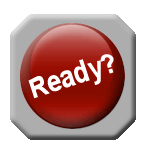The best heroes are strong in the beginning, persevere through hardship in the middle, and are generally rather desperate to win in the end. But there’s much more to writing a novel than having a strong beginning, middle, and end. That’s just chapters four, five, and six of James Scott Bell’s how-to book, Plot and Structure.
Part of JSB’s teaching employs an omelet illustration. I won’t quote him exactly, but let me give you the idea.
If seventeen different chefs each cooked an omelet, all seventeen plates of eggs would be different. Some will add veggies to the raw eggs, and some won’t. Some will top the omelet with cheese, and others will top it with salsa.
They all start out with eggs. They’re all cooked over similar temperature. And they are all enjoyed. But even though each chef followed the same basic formula, each recipe differed according to the chef’s tastes.
So it is with novelists. We follow basic plot lines that have been done before, but we add a unique twist. We turn the plot down an unexpected road. We find the right balance of conflict and tension release. And we find that the basic plot line has given us the freedom to create a unique story.
Why? Because the basic plot lines work. They’ve been tested time and time again. If we master the basics, we can enjoy the free flow of creativity.
He also teaches us ways to hold up the plotline in a structure suited to our individual stories. His graphs and charts help guide us to a better understanding. And his exercises at the end of the chapters give us a way to apply and practice the information we’ve just read.
Without the proper plotlines, our heroes will have nothing interesting to do and their heroic qualities will lie dormant. This book comes to our heroes’ rescue, enabling them to be heroic.
I recommend that Plot and Structure be read and studied – and read again if you didn’t get it all the first time.
Subscribe to:
Post Comments (Atom)







No comments:
Post a Comment